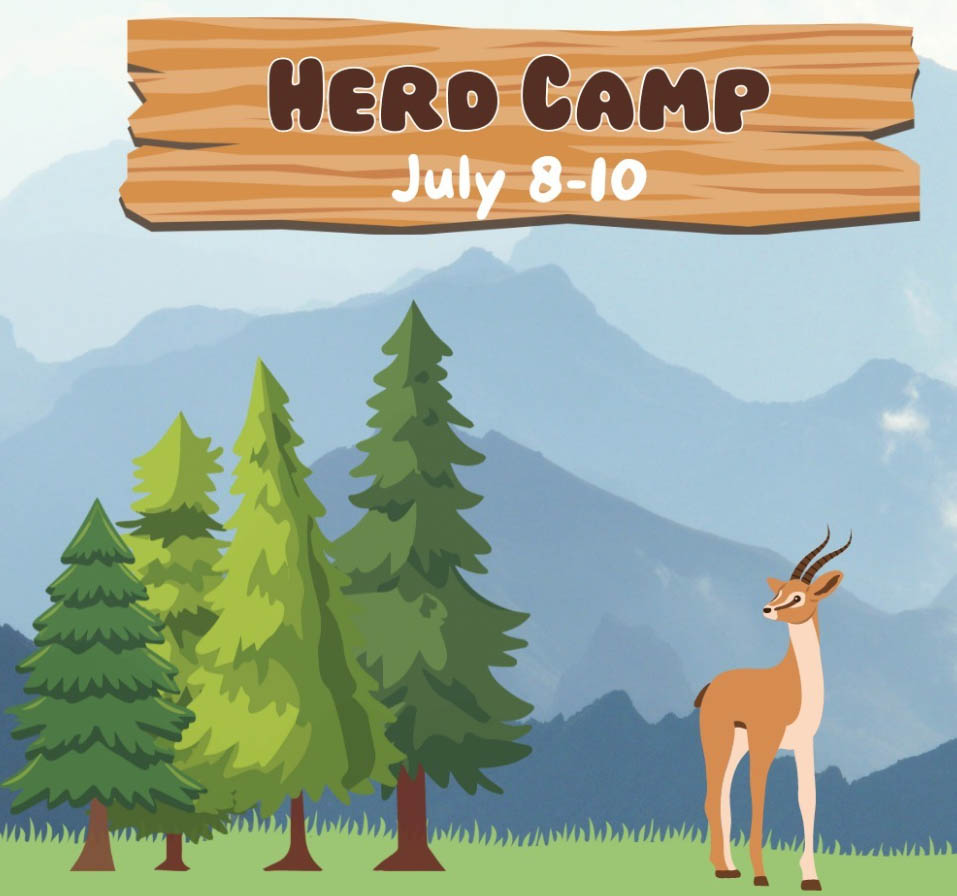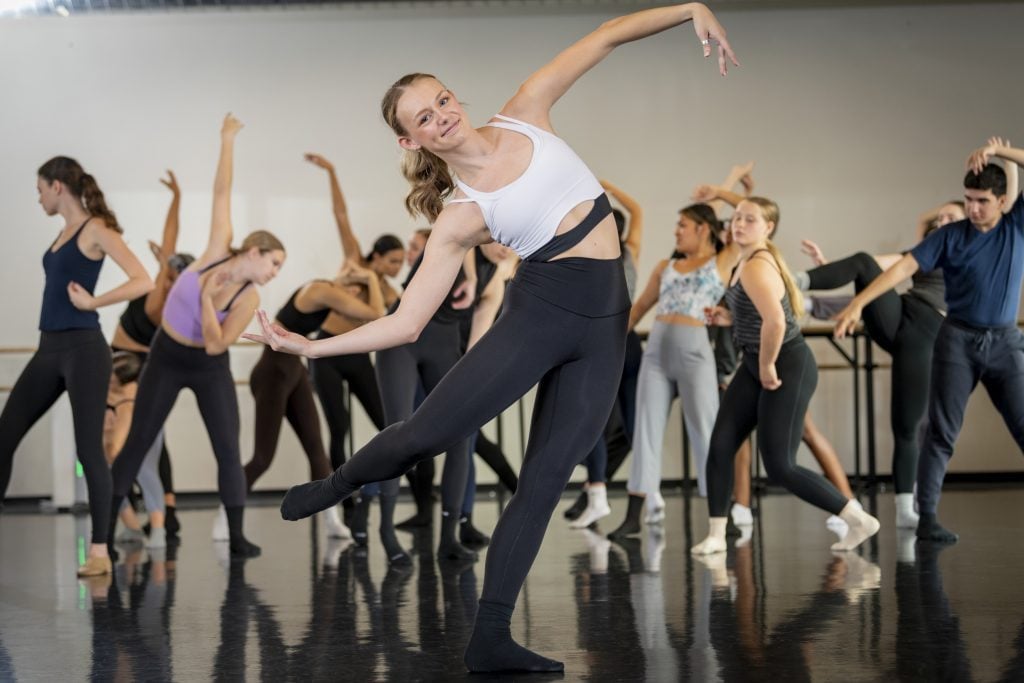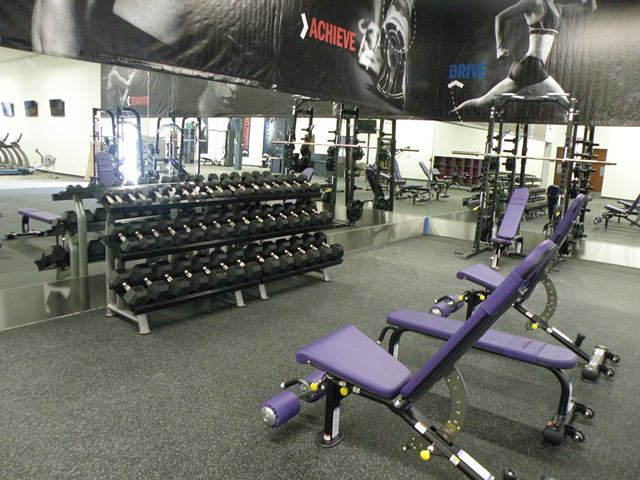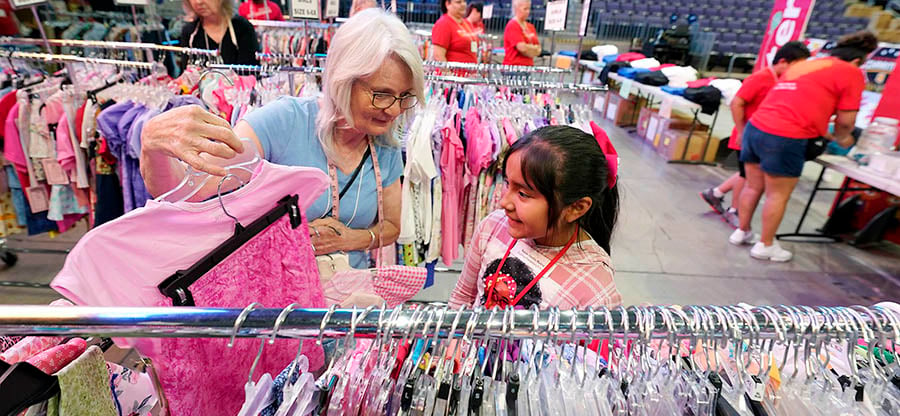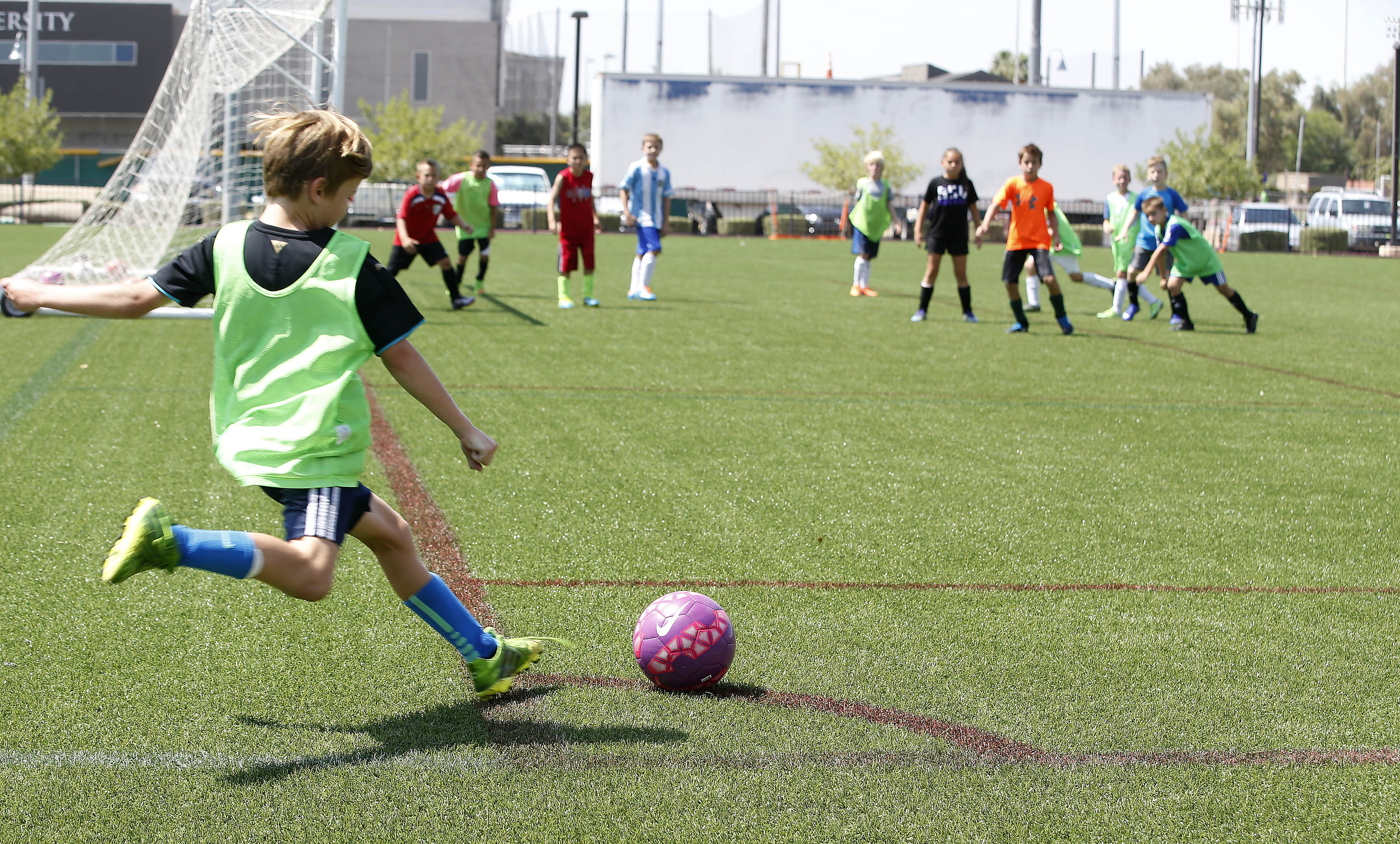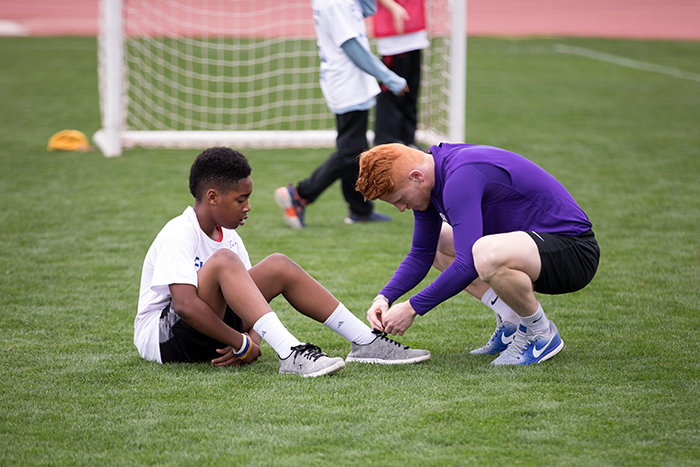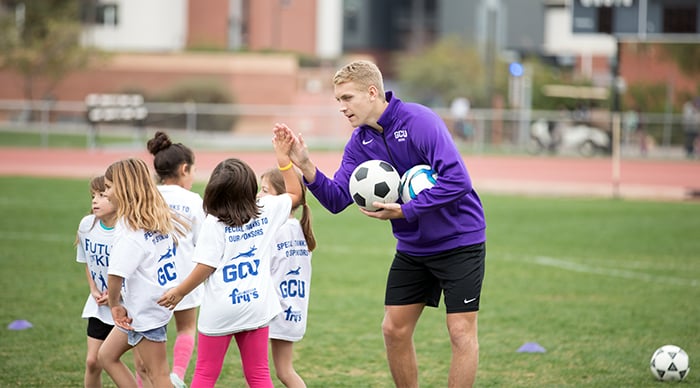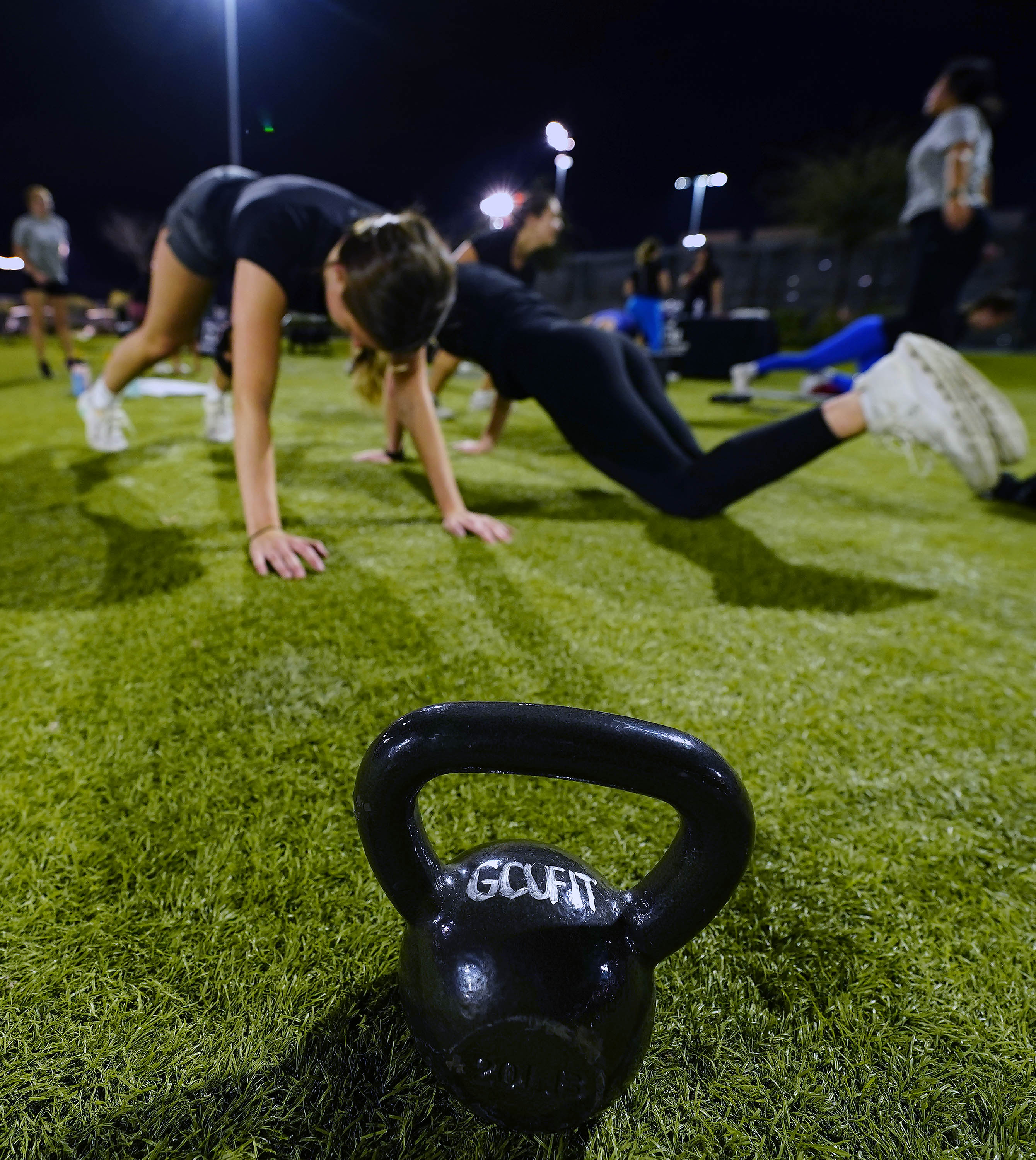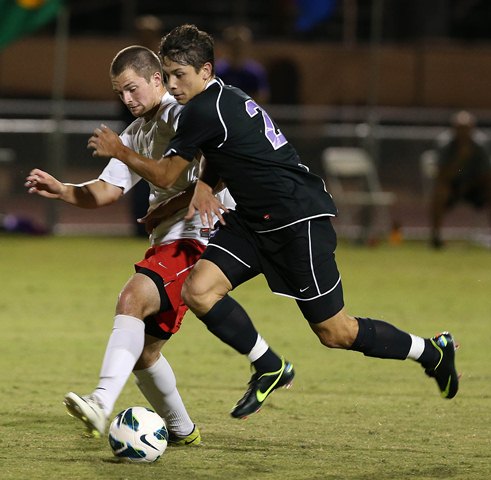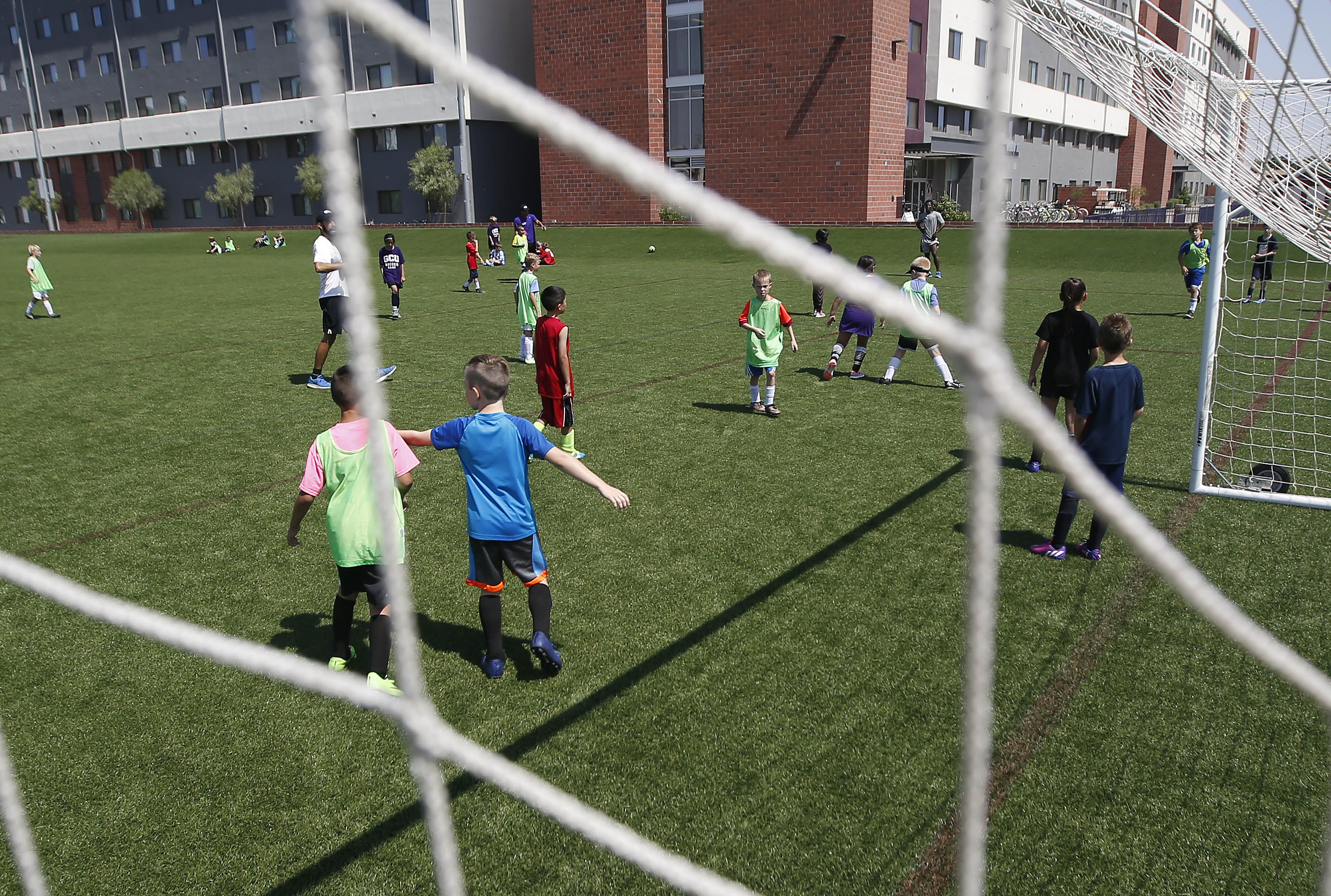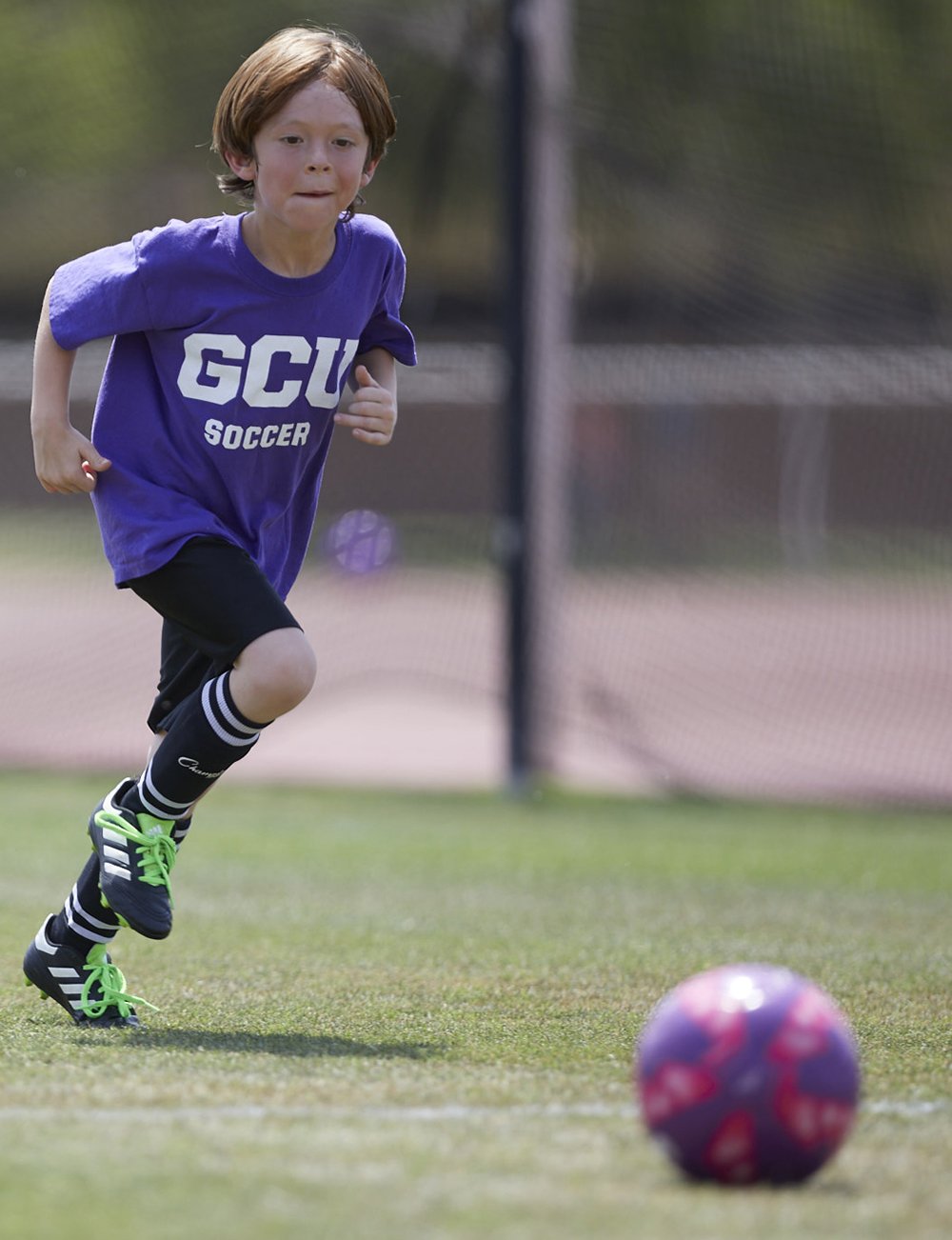Story by Lana Sweeten-Shults
Photos by Ralph Freso
GCU News Bureau
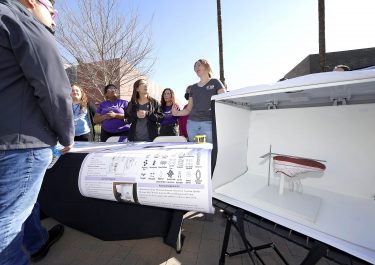
When Lauren DeJong started her college career at Grand Canyon University, little did she know she would be digging her heels into the study of shoes.
“When you walk around wearing shoes, you do NOT think about what the bottom of it looks like,” said DeJong.
For the past few months, the junior forensic science major has become somewhat of a shoe expert thanks to her time with the SolePurpose Database, a project in the Research and Design Program’s Forensic Research Lab.
She was one of a throng of forensic science students manning exhibit tables Tuesday near the College of Science, Engineering and Technology as part of Forensic Science Day. (View slideshow here.)
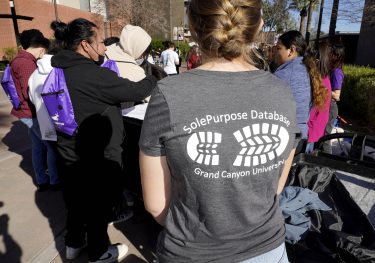
More than 700 high school juniors and seniors, community college students and educators from 30-plus high schools and home schools spent the day touring GCU’s DNA, nursing simulation and cadaver labs.
They also watched Phoenix Police Department dogs sprint with unbridled canine athleticism across the Quad in retrieval exercises, listened to talks about forensic firearm examination, flung their own blood spatter patterns (using red dye) at the popular blood-spatter booth and put their skills of deduction to the test at the Crime Scene Challenge booth, where a dummy lay on the ground, the back of his shirt splotched with red droplets, his money wallet strewn to one side and his phone thrown to the other side.
And they visited with forensic science students, such as DeJong, whose research group is working on creating a database of shoe outsoles to help examiners identify the make and model of a shoe more efficiently than they do now.
“So right now, when detectives find a shoe impression at a crime scene, they basically have to Google it to find out what shoe it is, which is very inefficient and difficult,” said DeJong.
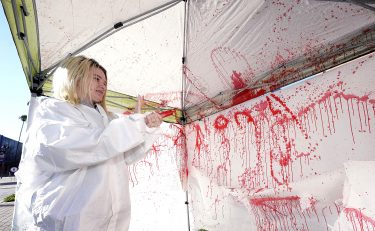
The database would help investigators find leads more quickly and, ultimately, help them solve crimes.
The student researchers aim to photograph and document the important information of each shoe, such as the brand, style number, manufacturer, outsole measurements and tread patterns. Then they hope to partner with GCU computer science students to create the database, which will include search options for those elements.
The SolePurpose Database team wasn’t the only Research and Design Program group showcasing its skills at Forensic Science Day.
A new undergraduate research team shared its project, Bridge the Gap, at a table on the Promenade.
“We just started this semester, and right now we’re going through a whole certification process and getting everything ready to go for Welcome Week,” said junior forensic science major Mackenzie Simmons.
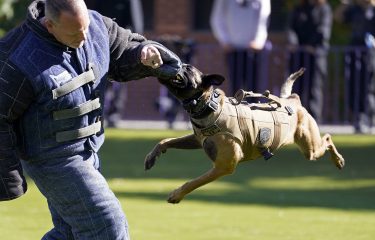
The team is planning to gather at least 100 pairs of fingerprints from willing students during Welcome Week this fall. Its mission, which it has chosen to accept, is not to look for general characteristics, such as loops or arches, but to go deep and compare and analyze the minutiae of those prints. Those are the small features or ridge discontinuities that differentiate fingerprints and make them unique.
The idea is to have “a more efficient way of narrowing down prints in databases,” Simmons said.
The student researchers want to statistically determine which fingerprint ridge characteristics come up so they can place a statistical value on fingerprint uniqueness. They also want to determine the frequency of fingerprint subclasses within the population.
Fellow junior forensic science major Megan Negrete, who operated the Bridge the Gap information table alongside Simmons, said what she loves about doing student research is that it gives the students a lot of hands-on work in the lab with their professors.
Besides the Research and Design Program booths, one of the popular exhibitor booths was a fingerprint casting table operated by the Chandler Police Department. It was where lab volunteer Brittany Fleck was using an AccuTrans dispensing gun – similar to a caulk gun – to squeeze out an elastic material that the visiting high school students used to make casts of their fingers.
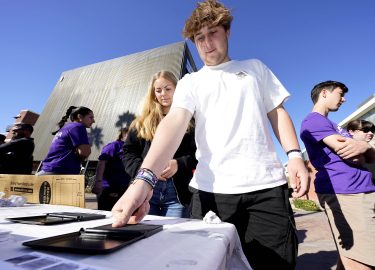
Crime scene technicians use the tool in the field to lift fingerprints from difficult surfaces.
As a police lab volunteer, Fleck is working on several projects, such as archiving crime scene photos. She also goes on ride-alongs with the crime scene techs.
“I get a lot of hands-on experience because I’m literally in the lab with everybody doing their day-to-day work. It’s very good experience,” she said.
Fleck also is an adjunct instructor at GCU teaching crime scene processing and physical evidence analysis labs, and she is one of the first students in GCU’s new online Master of Science in Forensic Science degree program.
Tally Violette, who graduated from GCU with her bachelor’s degree in forensic science in 2014, also operated the Chandler PD’s exhibit area and is one of the instructors for the online master’s program, in addition to working as a crime scene technician for the Chandler Police Department.
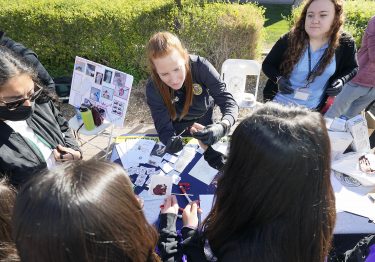
GCU’s Forensic Science Department, she said, has worked hard to make the online master’s program “as interactive as possible.” It comes complete with simulation labs to process crime scenes and do color spot testing on drugs, and at-home kits that allow students to do lab work at home. It is believed to be the first online master’s program in the country to incorporate remote lab work.
Violette said she was happy to share her passion for forensic science with the high school students at Forensic Science Day.
“I LOVE talking to anybody and everybody,” Violette said, about the best way to get into the field.
More than 400 undergraduates are studying forensic science at GCU, said associate professor Dr. Melissa Beddow, program director of the Bachelor of Science in Forensic Science.
What makes GCU’s program stand out, she said, is “how hands-on it is” – something the high school students on Forensic Science Day saw, not just at the booths but on various tours.
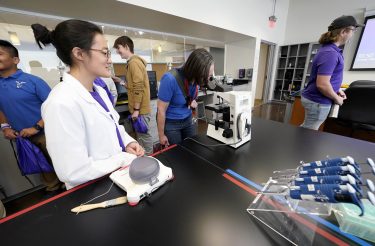
Senior forensic science major Naomi Lodenquai showed a tour group at the DNA lab how forensic scientists determine if a stain is indeed a blood stain. She took a cutting from a stained shirt and added a drop of ethanol, a drop of Kastle-Meyer reagent and a drop of hydrogen peroxide.
If a deep pink color develops, the presence of human blood is confirmed presumptively, Lodenquai said, since horseradish and some animal blood also can cause a deep pink color.
Lodenquai, who wants to be a firearms analyst, said she wished she could have attended something like Forensic Science Day wen she was in high school.
“I learned a LOT from television, which is not really accurate,” she said.
She loves forensic science even though it’s not nearly as glamourous as TV makes it out to be. "But it’s really fun to me,” she added.
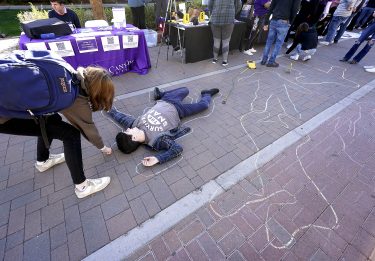
David Larsen, who teaches physics, calculus and forensic science at Scottsdale Christian Academy, said it was important to him to attend Forensic Science Day with his students: “I wanted them to hear about different opportunities in the field … and what kinds of things they can do.”
Joceline Navarrete, who attends Phoenix’s Barry Goldwater High School, wants to be a forensic science technician and was thrilled to learn everything she could.
“I noticed there was fingerprinting. I didn’t know that!” she said as she drank in all the possibilities.
Why did she come to Forensic Science Day?
“I just wanted to discover more opportunities,” she said, and maybe in a year or two, she’ll be the one digging her heels in.
GCU senior writer Lana Sweeten-Shults can be reached at [email protected] or at 602-639-7901.
***
Related content:
ABC15 Arizona: Students learn basics of forensic science at Grand Canyon University
GCU Today/GCU Magazine: GCU goes online with forensic science program
GCU Today: It's a crime to NOT love GCU's Forensic Science Day
GCU Today: Photography a focus for forensic science students

